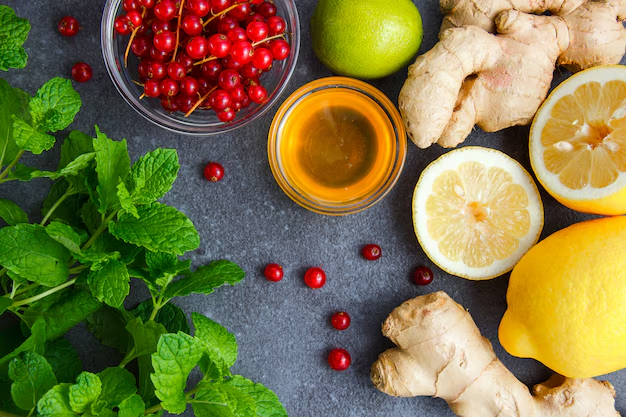How Long Does Fresh Ginger Really Last in the Refrigerator?
Fresh ginger is a versatile and zesty root that finds a place in many kitchens around the world. Whether you're adding it to a stir-fry, brewing it in tea, or using it to enhance the flavor of a spicy dish, ginger is a must-have ingredient. But how long will fresh ginger last in the refrigerator, and how can you keep it fresh as long as possible? Let's dive into the world of ginger storage, exploring tips, insights, and practical advice that every ginger enthusiast should know.
Understanding Fresh Ginger: A Culinary Staple
Fresh ginger, known for its spicy, tangy flavor and aromatic qualities, is the underground stem of the ginger plant. Often used in cooking and herbal remedies, it's crucial to understand how its unique properties can affect storage duration.
Why Does Ginger Need Proper Storage?
Ensuring your ginger stays fresh involves understanding:
- Moisture Content: Fresh ginger naturally contains moisture, which can lead to spoilage if not stored correctly.
- Temperature Sensitivity: Like many fresh produce items, ginger's longevity is influenced by temperature fluctuations.
- Air Exposure: Oxygen can cause ginger to dehydrate and lose flavor over time.
How Long Does Ginger Last in the Refrigerator?
Typically, fresh ginger can last up to three to four weeks in the refrigerator, but this depends on several factors including how it's stored, the refrigerator's temperature, and the root's original freshness.
Tips for Maximizing Ginger's Shelf Life
- Refrigerate Properly: Store ginger in the crisper drawer to maintain an optimal humidity level.
- Wrap in Paper Towels: Wrap ginger in paper towels before placing it in a plastic or breathable bag to absorb excess moisture.
- Airtight Containers: Use airtight containers to minimize air exposure, maintaining both flavor and moisture.
Signs of Spoiled Ginger
Before using ginger, check for these signs of spoilage:
- Soft or Mushy Texture: Indicates decomposition.
- Off-Putting Smell: A sour or fermented odor suggests spoilage.
- Mold: Visible mold spots signal it's time to discard.
Related Subtopics: Enhancing Your Culinary Experience
Fresh ginger might be the star, but understanding its storage connects to broader culinary and storage practices. Let's explore related subtopics that enrich your kitchen know-how.
Ginger Storage Alternatives
If you're wondering how else you can store ginger, consider these methods:
- Freezing Ginger: Freezing is an excellent way to extend ginger's shelf life indefinitely. Simply peel, chop into pieces, or grate it before storing it in freezer-safe bags.
- Drying Ginger: Drying involves cutting ginger into thin slices and using a dehydrator or oven at a low temperature. Once dry, store it in an airtight container.
- Pickling Ginger: Pickling involves immersing ginger slices in a vinegar and sugar solution, offering both a delicious taste and preservation method.
Integrating Ginger into Your Daily Diet
Ginger isn't just a kitchen staple; it's a versatile ingredient that can enhance your meals in many creative ways:
- Smoothies & Juices: Adding ginger to smoothies or juicing it with other fruits and vegetables gives a spicy kick and refreshes the palate.
- Homemade Teas: Fresh ginger tea with honey and lemon is both soothing and flavorful.
- Desserts & Baked Goods: Try adding ginger to cookies, cakes, and even ice cream for a unique flavor twist.
Consumer Tips: Maximizing Your Ginger Experience
Here’s a practical bullet-point summary to help you make the most of your ginger:
- 🧊 Freeze Ginger: For long-term storage, freeze peeled and grated ginger.
- 📦 Airtight Storage: Always keep ginger in airtight containers for best results.
- 🌡️ Check Temperature: Maintain a consistent refrigerator temperature to optimize freshness.
- 👃 Aroma Check: Regularly check the aroma for freshness indicators.
- 🍴 Culinary Creativity: Explore different recipes to use ginger creatively in your diet.
When to Replenish Your Ginger Supply
Despite your best efforts, there will be times when your ginger loses its zest or freshness. Here’s when you’ll know it’s time to restock:
- Texture Changes: When ginger becomes excessively soft or mushy.
- Lack of Flavor: If your dishes lack the usual punch despite adding usual quantities.
- Visible Rot: Mold or other signs of decay are an immediate indication to replace.
Closing Insight: The Art of Preserving Ginger
Understanding how to extend the life of fresh ginger not only prevents waste but also ensures you always have this fantastic ingredient on hand to enhance your cooking. By using the right storage techniques and knowing when it's time to let go, you'll keep your refrigerator stocked with flavorful, aromatic ginger. So, whether you’re trying a new ginger-infused recipe or simply enjoying its classic zing, these tips will help ensure your ginger stays fresh and flavorful, elevating any dish it graces.
